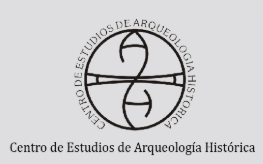Teledetección espacial aplicada a la búsqueda de restos de la Estancia San Miguel del Carcarañá
DOI:
https://doi.org/10.35305/tpahl.vi6.55Keywords:
Remote sensing, registration, Cultural remainsAbstract
According to Gebhard, remote sensing is commonly defined as “the recording and interpretation of information about features or objects without being in contact with them”. In the case of the application of remote sensing to the field of archeology, it is worth mentioning that the principle of Remote sensing is used for the identification, analysis and interpretation of objects, traits and / or cultural or natural contexts that allow to obtain, directly or indirectly, information resulting from past socio-cultural activities. Regarding the location of the remains of the possible constructions of what was the main hull of the Jesuit Estancia of San Miguel del Carcarañal and its environs, we have implemented the analysis through remote sensing. The materials used, the method and techniques applied are presented, followed by the results achieved.







